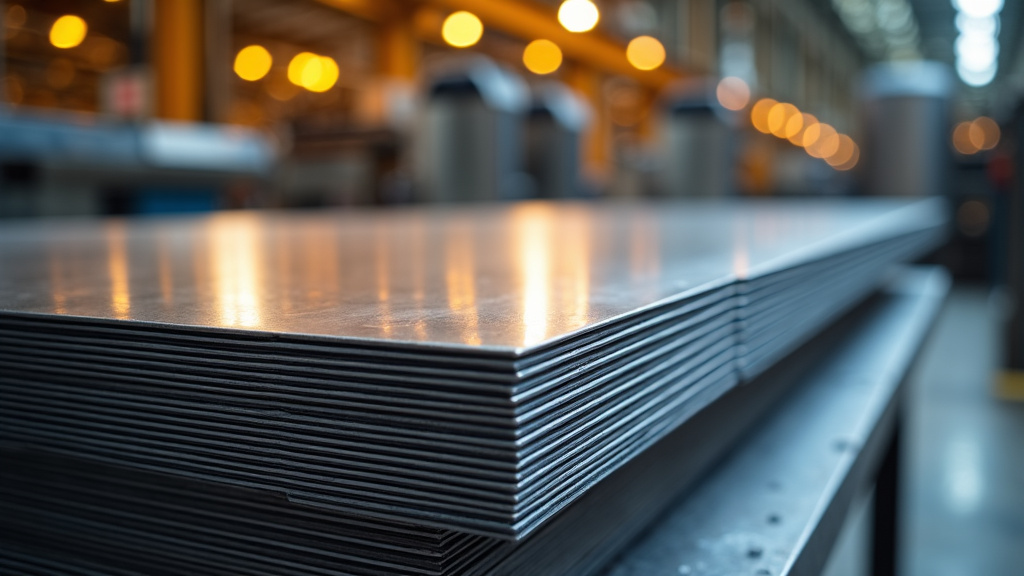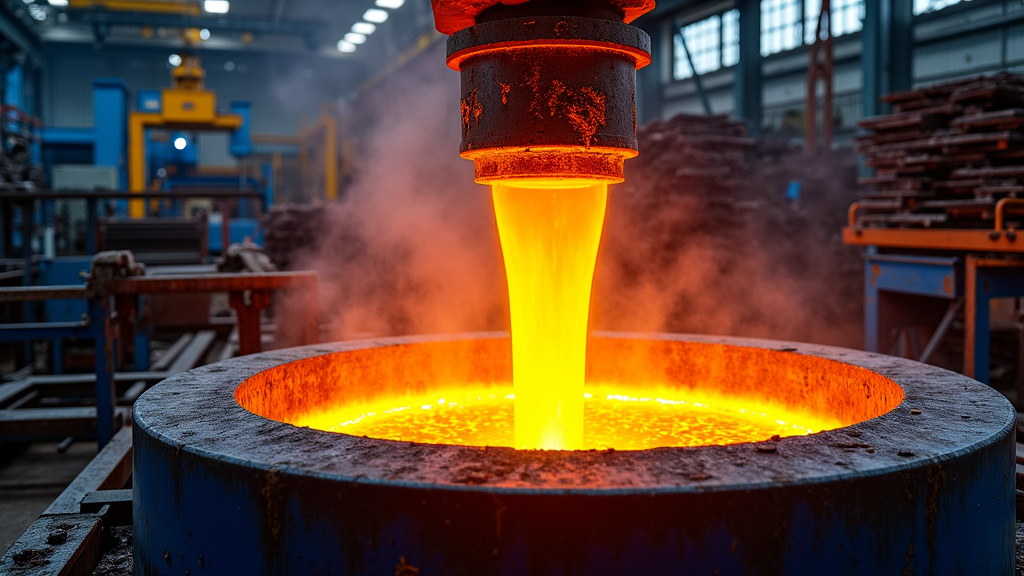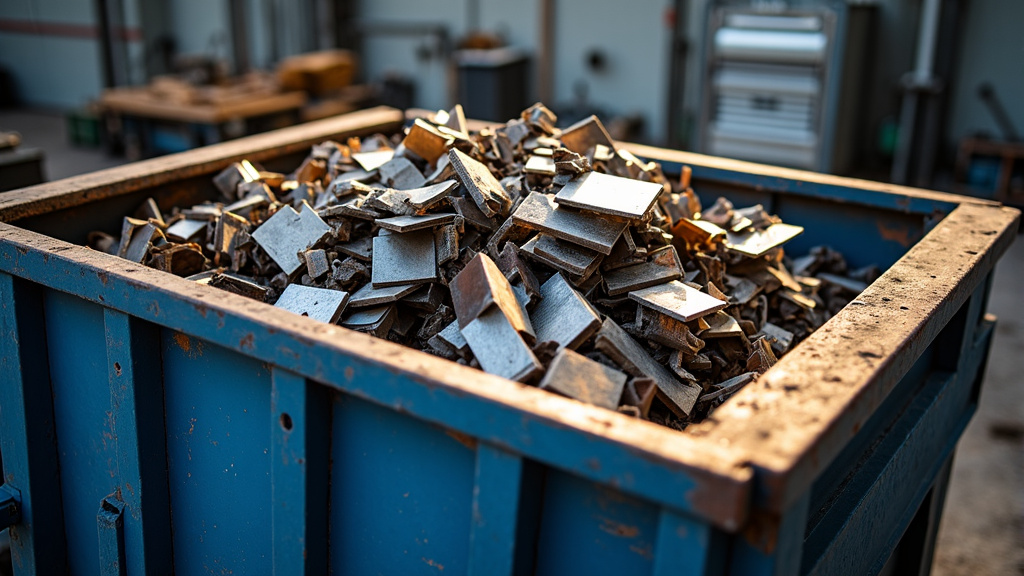5901 Botham Jean Blvd, Dallas, TX 75215
Is Stainless Steel Recyclable? Understanding the Basics
April 19, 2025Stainless steel is 100% recyclable and stands as one of the most extensively recycled materials in the world today.
Unlike many materials that deteriorate with each recycling cycle, stainless steel can be recycled indefinitely without losing its inherent quality or distinctive properties. This remarkable characteristic makes it an exceptionally sustainable choice in our resource-conscious world.
The durability and infinite recyclability of stainless steel create a perfect model for circular economy principles. When we recycle a stainless steel water bottle or kitchen appliance, the valuable alloy elements—chromium, nickel, and molybdenum—remain intact and can be fully recovered during the recycling process.
These elements, which give stainless steel its corrosion resistance and strength, represent significant environmental and economic value.
How is Stainless Steel Recycled?

Stainless steel recycling begins with material collection, which typically comes from two primary sources: reclaimed scrap and industrial scrap. Reclaimed scrap consists of used stainless steel products that have reached the end of their lifecycle, such as kitchen appliances, automotive components, and construction materials.
Industrial scrap, on the other hand, is generated during manufacturing processes, including excess material, cuttings, and production errors.
The Sorting Process
Once collected, stainless steel undergoes a meticulous sorting process. Different grades and alloys of stainless steel contain varying amounts of chromium, nickel, and other metals, making proper segregation crucial. Modern recycling facilities employ specialized magnetic separators and sensors to distinguish stainless steel from other metals.
Advanced facilities use technologies like X-ray fluorescence (XRF) analyzers to identify the exact composition of each piece, ensuring it’s properly categorized. This precision sorting is essential because mixing incompatible grades can compromise the quality of the recycled material.
Shredding and Size Reduction
After sorting, the stainless steel scrap is fed into industrial shredders that break it down into smaller, more manageable pieces. These powerful machines can process everything from thin sheets to thick industrial components, reducing them to uniform fragments.
The shredding process significantly increases the surface area of the material, which is critical for the subsequent melting phase. Smaller pieces melt more efficiently and evenly, reducing energy consumption during recycling.
Cleaning and Decontamination
Before melting can begin, the shredded stainless steel must be thoroughly cleaned. This phase removes paints, coatings, oils, and other contaminants that could affect the quality of the recycled metal. Thermal, chemical, or mechanical cleaning methods may be employed depending on the type and level of contamination.
Proper decontamination is vital for producing high-grade recycled stainless steel. Even small amounts of certain contaminants can significantly alter the properties of the final product.
Melting and Refining
The cleaned stainless steel scrap is then melted in electric arc furnaces, which can reach temperatures exceeding 1,600°C (2,900°F). During this phase, metallurgists carefully monitor and adjust the composition by adding virgin materials as needed to achieve the desired alloy specifications.
The molten metal undergoes refining processes to remove any remaining impurities. These may include oxygen blowing, which oxidizes unwanted elements, or vacuum degassing to remove dissolved gases that could cause defects in the final product.
Casting into New Products
Once properly refined, the molten stainless steel is cast into various forms for further processing. Common formats include slabs, billets, or sheets, depending on the intended application. These semi-finished products then enter the manufacturing stream, where they’re transformed into new stainless steel goods.
Throughout this entire recycling process, quality control measures ensure that the recycled stainless steel meets or exceeds industry standards. The result is a material virtually indistinguishable from virgin stainless steel but produced with significantly less environmental impact.
What Are the Benefits of Recycling Stainless Steel?

Recycling stainless steel delivers substantial environmental advantages by significantly reducing the demand for virgin material extraction. This conservation of natural resources helps preserve landscapes that would otherwise be disrupted by mining operations and protects ecosystems from the harmful effects of resource extraction.
The energy conservation aspects of stainless steel recycling cannot be overstated. The recycling process requires considerably less energy compared to producing new stainless steel from raw materials, resulting in a smaller carbon footprint across the industry. This energy efficiency translates directly into reduced greenhouse gas emissions that would otherwise contribute to climate change.
Environmental Benefits
When stainless steel is diverted from landfills, it prevents the accumulation of waste that would otherwise remain in the environment for generations. Most modern stainless steel products already contain approximately 60% recycled content, demonstrating the industry’s commitment to sustainable practices and closed-loop manufacturing.
The recycling process for stainless steel is remarkably efficient, with virtually no degradation in quality regardless of how many times the material is recycled. This perfect recyclability makes stainless steel a standout performer in the circular economy, where resources are kept in use for as long as possible through continuous recycling and remanufacturing.
Waste reduction extends beyond just the stainless steel itself. By recycling this valuable material, we also eliminate the need for extensive mining operations that generate additional waste streams and potential environmental contaminants.
Economic Advantages
From a business perspective, recycling stainless steel offers compelling economic incentives. Companies can generate additional revenue streams by selling scrap stainless steel to recyclers, transforming what was once considered waste into a valuable commodity. This creates a win-win situation where environmental responsibility aligns perfectly with financial interest.
The recycling industry itself creates substantial employment opportunities throughout the collection, processing, and remanufacturing chain. These jobs tend to be locally based and cannot be easily outsourced, contributing to community economic resilience while simultaneously advancing environmental goals.
Cost savings extend to manufacturers who incorporate recycled stainless steel into their production processes. Using recycled materials often costs less than virgin materials, particularly as raw material prices fluctuate with global market conditions and extraction becomes increasingly expensive as easily accessible deposits are depleted.
How Does Stainless Steel Compare to Other Recyclable Materials?
Stainless steel stands apart from most recyclable materials due to its exceptional sustainability profile. When examined alongside other common recyclable materials like aluminum and plastics, stainless steel demonstrates remarkable advantages that position it as a leading sustainable material option.
The metal’s unique properties create environmental benefits throughout its entire lifecycle.
Comparative Recyclability Rates
Stainless steel boasts an impressive global recycling rate of 70-80%, comparable to aluminum’s 75-80% rate. The economics of stainless steel recycling help drive this high rate—the material’s inherent value makes collection and processing financially viable. In stark contrast, plastics achieve only a 30-40% recycling rate globally, with many plastic types facing significant recycling challenges.
The energy requirements for recycling further highlight stainless steel’s advantages. Recycling stainless steel requires approximately 60-74% less energy compared to producing new steel from raw materials. While aluminum recycling saves even more energy (about 95% compared to primary production), both metals significantly outperform plastics in energy efficiency during recycling.
What truly sets stainless steel apart is its resistance to downcycling—the process where materials lose quality through recycling cycles. While aluminum maintains its properties reasonably well through recycling, plastics typically suffer from downcycling, becoming progressively lower-quality products with each cycle. This degradation significantly limits plastics’ long-term sustainability.
Durability and Product Longevity
When considering overall sustainability, durability becomes a critical factor often overlooked in recycling discussions. Stainless steel’s exceptional corrosion resistance and strength create products with significantly longer lifespans than alternatives. This extended useful life reduces replacement frequency and ultimately decreases material consumption and waste generation.
Stainless steel products frequently outlast their aluminum counterparts in harsh environments due to superior corrosion resistance. While aluminum is lighter and adequate for many applications, it generally doesn’t match stainless steel’s longevity in challenging conditions. Plastic products typically have the shortest lifespans, particularly when exposed to UV radiation, temperature fluctuations, or mechanical stress.
The environmental implications of this durability are substantial. By extending product lifecycles, stainless steel reduces the cumulative environmental impact across multiple product generations. A single stainless steel component might replace several aluminum components or numerous plastic alternatives over its lifetime, effectively multiplying its sustainability value.
Composite Materials: The Recycling Challenge
Composites like carbon fiber-reinforced polymers present even greater recycling challenges than conventional materials. Their complex composition makes separation difficult, resulting in recycling rates below 10%. The recycling infrastructure for composites remains underdeveloped compared to metals, with many composite products ultimately ending up in landfills despite their desirable performance characteristics.
The contrast with stainless steel is stark. While composites might offer weight and strength advantages for specific applications, their end-of-life management remains problematic. Stainless steel’s established recycling networks and inherent material value ensure it reenters the production cycle efficiently, making it a more holistically sustainable choice despite potential weight penalties.
Economic Factors in Material Recycling
The economic factors driving recycling rates can’t be overlooked when comparing materials. Stainless steel’s high intrinsic value creates strong market demand for recycled content. Scrap yards and recycling facilities actively seek stainless steel due to its economic value, creating efficient collection networks that boost recycling rates.
This economic incentive stands in contrast to plastic recycling, where low material values often make collection and processing financially challenging without subsidies or regulatory mandates. The economics of recycling thus naturally favor stainless steel, creating self-sustaining recycling systems that function effectively without significant external intervention.
From a comprehensive sustainability perspective that considers full lifecycle impacts—including production energy, recyclability, durability, and economic incentives—stainless steel emerges as a frontrunner among recyclable materials. Its combination of infinite recyclability and exceptional durability creates cumulative environmental benefits that few other materials can match.
Conclusion: Embracing Stainless Steel for a Sustainable Future

Stainless steel stands as a cornerstone material in our transition toward a more sustainable future. Its unparalleled 100% recyclability without quality degradation makes it exceptional among industrial materials, enabling resources to remain in use indefinitely.
The durability of properly selected and maintained stainless steel ensures products last the lifetime of projects, dramatically reducing the need for replacements and conserving valuable resources in the process.
As technologies advance, particularly with innovations like hydrogen-based steelmaking and increased availability of high-quality scrap, stainless steel’s environmental footprint continues to shrink. By choosing stainless steel products and ensuring their proper recycling at end-of-life, both consumers and businesses actively participate in closing the loop of material use, reducing environmental impact, and strengthening the circular economy.
For professional guidance on recycling stainless steel and other metals properly, contact Okon Recycling at 214-717-4083.
